9 Ways to Improve NPS Response Rates
Read More
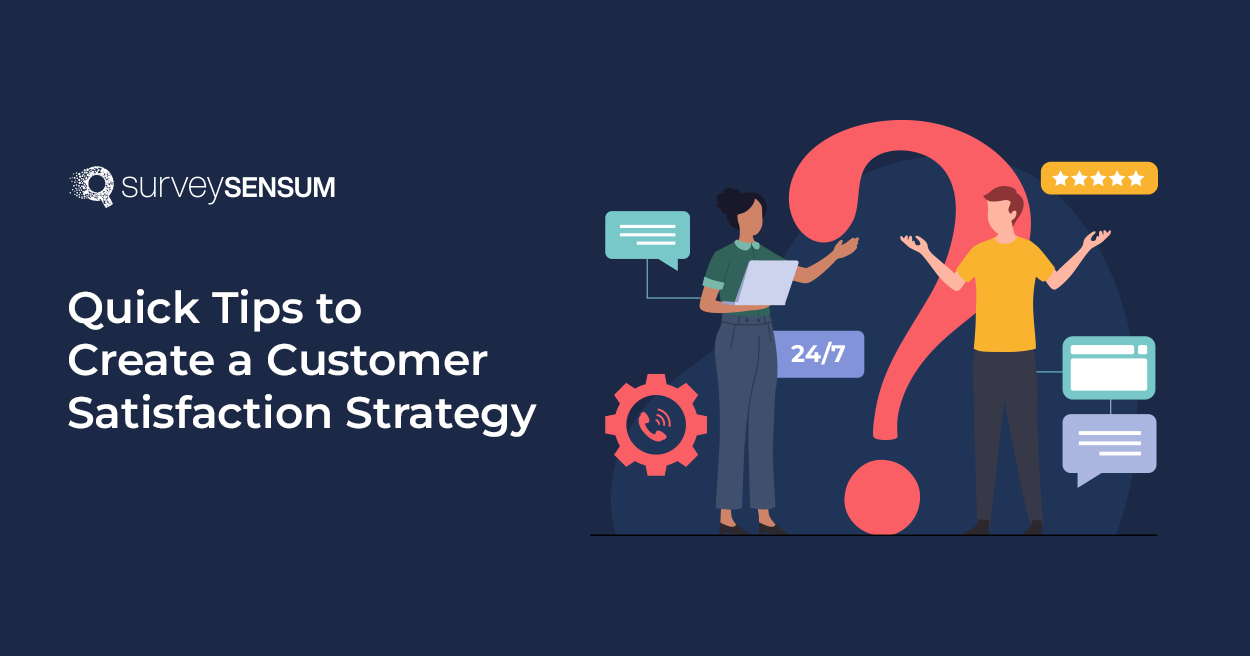
Developing a robust customer satisfaction strategy is essential for any business that aims to improve customer satisfaction, enhance brand loyalty, and drive growth.
According to a recent article, “The Five Disciplines of Customer Experience Leaders” by Bain & Company, excelling in customer experience can have a significant impact on a company’s revenue. In fact, companies that prioritize customer experience have been found to grow their revenue by 4-8% above their market average.
These compelling numbers underscore the importance of customer experience and emphasize that it should not be taken lightly.
An excellent example of a company that has successfully implemented customer-centric initiatives is Amazon. Through initiatives such as fast and reliable shipping, easy returns, personalized recommendations, and exceptional customer service, Amazon has positioned itself as a leader in delivering a positive customer experience.
The positive correlation between customer satisfaction and revenue growth is evident in Amazon’s financial performance. In the first quarter of 2023, Amazon reported a significant increase in net sales, amounting to $127.4 billion, representing a 9% growth compared to the same period in 2022.
It’s important to recognize that the impact of customer satisfaction on revenue growth extends beyond Amazon. Many companies across diverse industries have experienced similar benefits by prioritizing and investing in customer satisfaction. This highlights the universal applicability of customer-centric strategies for driving business success.
To help you enhance customer satisfaction in your own business, we have identified eight highly effective strategies that can be tailored to your specific context.
Let’s explore these strategies and discuss how they can contribute to improving your customers’ experience and driving your business forward.
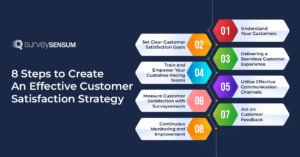
Here are the 8 steps to create an effective customer satisfaction strategy for your business. These steps will be beneficial to improve your customer satisfaction.

Crafting a successful strategy requires a deep understanding of your target audience. Without this understanding, any strategy is bound to fall short of its goals.
Let’s say you opened a cafe and aim to serve the best coffee and cookies. Your business is doing great and after a while, you decided to do a survey to find out ways to improve your product and services and found out that many of your customers are looking for some vegan and gluten-free options for cookies and some plant-based milk options for coffees.
But instead of taking that feedback seriously, you ignored it which resulted in to increase in your customer churn rate because certain groups of people were dissatisfied with your products.
This shows the importance of making an effort to understand your customers and take relevant actions.
Customers have multiple touchpoints with your brand, from clicking on your website to watching a product demo or making a purchase. These touchpoints can provide you with crucial information on your customer’s needs and expectations and what you need to improve your customer experience.
To get a better understanding of your customer’s needs and expectations you can incorporate the following techniques into your customer satisfaction strategy:
Brand Example: Netflix revolutionized the entertainment industry by understanding the evolving preferences and viewing habits of customers, including the importance of effective web design. Similarly, our tailored web design can help businesses improve website conversions by increasing online presence and driving meaningful engagement.
By leveraging data analytics and algorithms, they personalized the user experience, recommending relevant content based on individual preferences. This understanding of customer needs led to increased customer satisfaction, as subscribers were able to discover and enjoy content tailored to their interests.
As a result, Netflix experienced a significant increase in customer retention and acquisition, driving up their subscription numbers and ultimately boosting profitability. According to a research report by Antenna, the customer churn rate of Netflix was 2.4% in 2021 – which is incredibly low compared to other streaming services like Hulu.

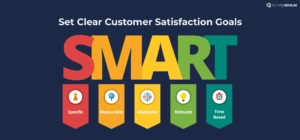
Now that you understand your customer’s needs, expectations, and interactions with your brand, the next step is to set clear customer satisfaction goals that align with your business objectives.
The importance of including this step in your strategy is to provide focus, measurable progress, accountability, motivation, transparency, and an understanding of prioritization to everyone involved in the strategy.
Your team needs to understand what their objectives are and how it helps them achieve customer satisfaction goals for your business. These goals or objectives will provide your team with a measurable framework for assessing their progress on customer satisfaction strategy.
Here are a few points to consider while setting up your customer satisfaction goals:
Here’s an example:
Let’s say the customer support team of your organization was given the target to respond to customer queries within 24 hours.
This clarity enables them to prioritize tasks, allocate resources effectively, and streamline their workflow. As a result, customers received prompt responses to their inquiries, and they felt valued and supported, leading to higher satisfaction levels.
Additionally, achieving the set goal demonstrates the team’s commitment to providing excellent customer service, reinforcing trust and loyalty among customers.
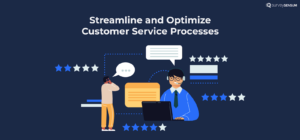
If a customer encounters a bad experience at any point, chances are they will leave your business.
Even PwC’s Experience is Everything report says, 59% of customers have reported that they will leave a brand they love after several bad experiences, and 17% will leave just after one bad experience.
Think about it!
Don’t you always expect a smooth experience when doing business with any brand? So do your customers!
Delivering a seamless customer experience process will help your customers effortlessly navigate through every interaction with your brand.
Here are a few exceptional tips on how you can deliver and create a seamless experience for your customers:
Streamline Your Customer Service With SurveySensum – Request a Demo

When it comes to improving customer satisfaction it is very crucial to train your customer-facing teams to be prompt and responsive as they are like the first line of defense for your brand. This includes salespeople, customer service agents, and any other teams that interact with customers directly.
According to the “State of Connected Customer,” article of Salesforce, 89% of customers are more likely to make another purchase from a brand after a positive customer service experience.
The above statistics show the importance of having a well-trained, knowledgeable, and prompt customer-facing team to spearhead your customer service, but how to ensure that?
Here are a few tips to help you train and empower your customer-facing teams:
Brand Example: Spotify’s fun approach to customer service.
Spotify has a unique and enjoyable approach when it comes to customer support. They go beyond the traditional methods and bring fun into the mix.

For instance, when a user in Canada reached out to them on Twitter, seeking help to understand how Spotify works, the response they received was far from ordinary. Instead of a standard reply, Spotify sent them an instruction manual in the form of playlists! It’s just one example of their creative and amusing customer interactions.
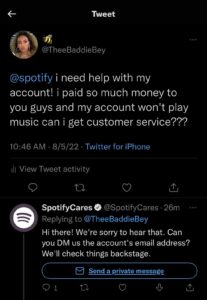
They are also known for quickly resolving their customer’s issues. This user faced some issues regarding her Spotify account and the team replied back to her with an immediate solution within 26 minutes.
They really know how to engage with their users in a lighthearted and entertaining way. But are also quick to reply and resolve the issue at hand.
Spotify takes pride in offering not just great music, but also enjoyable and personalized customer service experience. They constantly find innovative ways to give their customers exactly what they want and, make their interactions memorable and enjoyable.
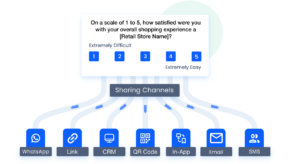
In simple terms, this step means, “Be where your customers are”. This step is all about offering multiple communication channels to your customers such as emails, messaging, chatbots, surveys, and many other channels so that they can communicate with you via their preferred channel.
Here are a few tips to consider for utilizing effective communication channels for your business:
Real-life Brand Example: SurveySensum has achieved an impressive 98% retention rate by leveraging multiple communication channels to enhance support. Customers can engage via various channels like websites, social media, WhatsApp, email, chatbots, and calls.
This enables SurveySensum to promptly respond to customer needs, resulting in an impressive 98% retention rate. Our commitment to a 2-hour SLA support response time ensures efficient support and has built an ecosystem that has earned trust and loyalty globally.
Utilize Effective Communication Channels With SurveySensum – Request a Demo
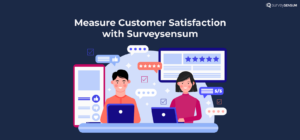
Measuring your customer satisfaction is a crucial step in building an effective customer satisfaction strategy. This allows you to understand the level of satisfaction your customers have towards your products, services, and overall brand experience.
And not just, by implementing effective measurement techniques, you can gain valuable insights into customer experiences, identify pain points, and make data-driven decisions to enhance satisfaction levels.
But how to do that?
Brand Example: Allianz wanted to reduce its customer complaints. Allianz was facing issues with solving customer complaints in real-time, impacting their overall satisfaction
They turned to SurveySensum, a customer feedback platform SurveySensum helped Allianz listen to all their customer feedback at all touchpoints, gather feedback in real-time, analyze that feedback, and take data-driven actions.
Impact: This helped Allianz reduce their customer complaints by 23% and boosted overall satisfaction.
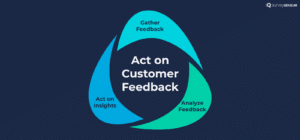
Measuring customer satisfaction is essential – but only if we take action on the feedback gathered from customers.
But, how can we do that?
Here are some tips you can use to act on your customer feedback:
While this entire process boosts customer satisfaction, it also encourages loyalty!
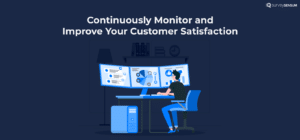
Improving customer satisfaction is not a one-time thing. It is something that requires ongoing effort and attention.
Furthermore, when you implement a strategy to enhance your customer satisfaction, it is crucial to keep monitoring and evaluating its effectiveness. This way, you can identify what’s working well and what’s not, giving you the chance to make improvements where needed.
By continuously assessing and adjusting your approach, you can maintain a consistently high level of customer satisfaction and keep your customers happy.
Here’s how you can implement continuous monitoring and improvement strategies:
A robust customer satisfaction strategy is crucial for business success. Understand customer needs, set clear goals, and deliver exceptional service. Empower staff, offer seamless communication, and measure satisfaction with reliable tools.
Utilize SurveySensum, an efficient feedback tool, to enhance customer satisfaction and fuel sustainable growth.
How?
With SurveySensum, you can
